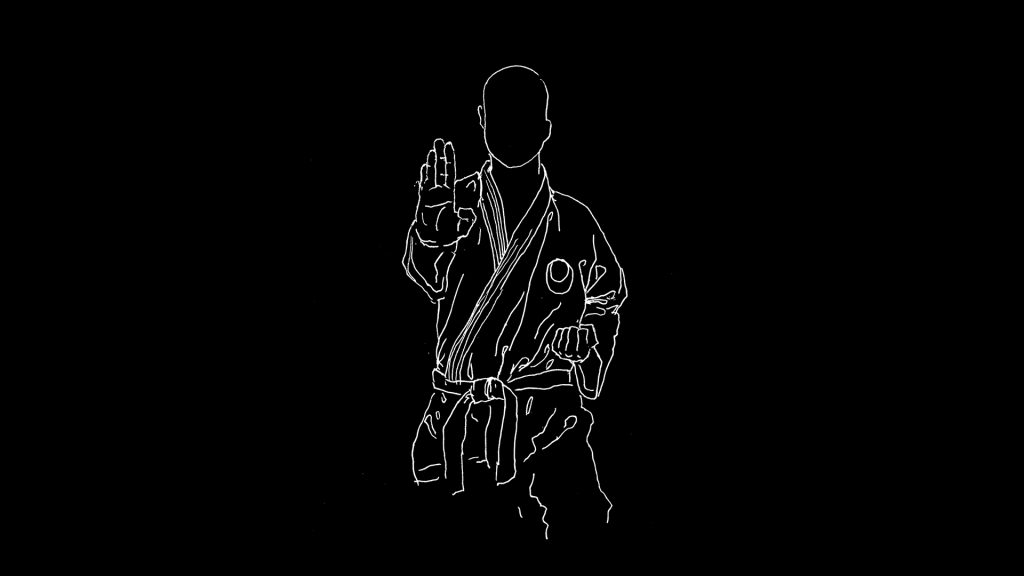The Gekisai kata of Goju-Ryu Karate are among of the most familiar forms in martial arts – even if you’ve never heard of Gekisai or Goju-Ryu, you’ve probably seen these forms in practice. Behind these kata is a storied history.
Following a meeting of Okinawan karate masters in 1936, it was decided there was a need to standardise karate to make it easier to propagate and spread the practice of karate and form a curriculum that could be taught in schools.
A karate master, Anko Itosu, had already put together a series of kata to teach karate to school children. The five kata he developed were called the Pinan kata (平安形 – peaceful forms). Read more about the use of kata here.
Two of karate’s foremost teachers, Shoshin Nagamine Sensei (founder of Matsubayashi Ryu) and Chojun Miyagi Sensei (founder of Goju Ryu) formulated the Fukyu Kata (普及形 – to spread or to make popular form) based on Itosu Sensei’s Pinan Kata. It was the second of the Fukyu Kata that Miyagi Sensei renamed Gekisai Dai Ichi.
The Gekisai kata are taught as the first kata in the Goju Ryu Karate syllabus. They were created by Chojun Miyagi Sensei in 1940 as a way of introducing the basic karate forms to a wider audience.
Goju-Ryu Gekisai kata
Miyagi Sensei was aware that the usual method of learning karate began with the intensive study of Sanchin kata. This entailed very demanding repetitions of that form. This usually discouraged beginners, causing them to stop training.
But Miyagi Sensei wanted to increase the popularity of karate. He endeavored to find a way of opening up the training to all, regardless of age or physical condition. To do this, he saw the need for transition kata prior to the usual Sanchin training that would be possible for anyone to accomplish.
The names for the two new kata were Gekisai dai ichi, and Gekisai dai ni. (Literally Geksai number one and Gekisai number two.)
The characters that form the name of the kata are:
- 撃 – Geki – meaning “to attack”
- 砕 – Sai – meaning “to smash, break, crush”
Together the two characters translate as “to pulverise”, but the most commonly used translation is “to attack and destroy”. The name chosen for these new kata should be seen against the background of the time in which the kata were formulated.
Japan was already at war with China, and Japanese entry into World War Two was looming. The aggressive name may well have been used to influence the youth preparing them for what experiences were to come.
NEW! Put the principles from this article into practice with the free courage-boosting MaArtial app on the App Store for iOs and Play Store for Android.
Gekisai kata in modern practice
The Gekisai kata are unusual in that they are the only Goju Ryu Kata that contain Jodan Uke (upper-level blocks). The reason for this is thought to be that in the kata development. These techniques are aimed upwards, they would be best used as a response to an attack by someone taller. At that time, it was taken for granted that most westerners would have been taller than the Japanese.
Originally, the punches following the upper-level blocks were directed above the head of the person performing the kata. This mimicked attacking the face of a larger opponent. Nowadays, the punch is performed at normal head level or to the stomach area.
Another difference in these kata is also likely to have been inspired by the probability of war. Unlike all the existing kata as practiced in Goju Ryu, the new kata end with taking a step forward. It is said that Miyagi Sensei felt that this would portray the feeling of moving forward (possibly with a notion of advancement on the enemy).
Following the death of Chojun Miyagi Sensei in 1953, four main schools teaching Goju Ryu emerged.
These schools were the Meibukan (the House of the pure-minded warrior) founded by Meitoku Yagi; the Jundokan (House in which we follow in the master’s footsteps) founded by Eiichi Miyazato; the Shoreikan (House of politeness and respect) founded by Seikichi Toguchi and the Goju Kai (Goju association) founded by Gogen Yamaguchi.
Depending on how the founders of these schools were taught by Miyagi Sensei, or how they thought the future development of Goju Ryu could best be served, differing ways of performing the kata were passed on to the practitioners of their schools. That is why there are now two ways of performing Gekisai Kata.
The version of Gekisai Dai Ichi seen in the following video is as practiced by the followers of Gogen Yamaguchi Sensei and Meitoku Yagi Sensei:
[text-block-start]
At MaArtial, we believe the history and philosophy of the martial arts are important to help gently increase the interest and desire to start training.
This article explores the kata of one type of Karate but is applicable to general, traditional martial arts thinking and evolution. The main goal is to ask “why, how, what, when?” to an open-minded instructor.
As Jim says, “everything in Karate should be done for a reason.”
[text-block-end title=”MaArtial comment”]














